Lumberjack Contests are the Coolest College Extracurricular
How a campfire competition between 19th-century loggers became a professional sport.
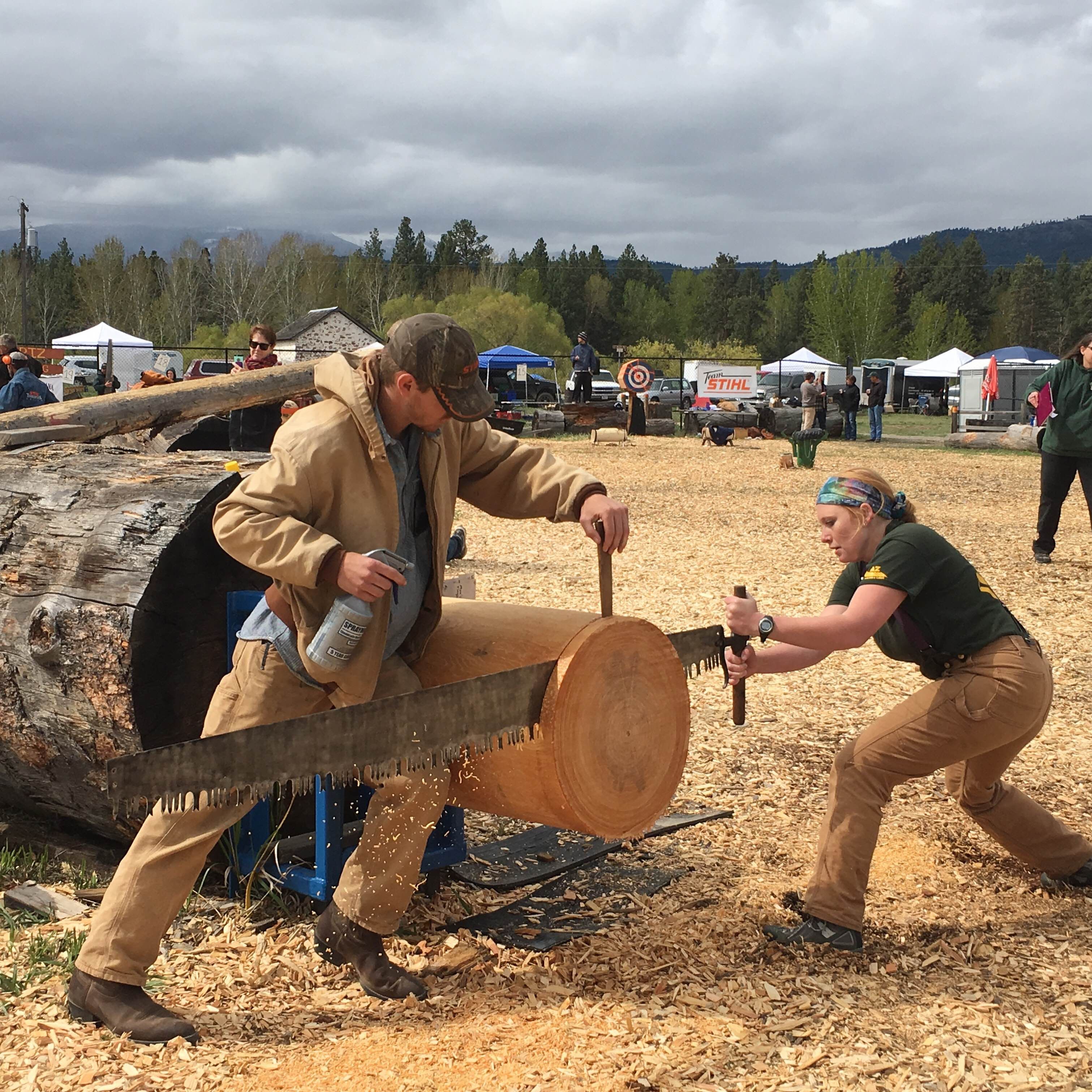
Carissa Camenson maneuvers a traditional six-foot crosscut saw through a log in a college-level logging competition. (All Photos: Mikayla Camenson)

Carissa Camenson stood in a vast acre and a half arena in Missoula, Montana, the ground covered with chips and flakes of wood. The sophomore forestry major from Northern Arizona University expertly pulled back and forth on her six-foot-long crosscut saw that sliced through an approximately 20-inch diameter log.
Camenson was competing in the single buck contest, one of the hardest logger sporting events at April’s 2016 Association of Western Forestry Clubs (AWFC) Conclave, where some 150 participants sweated to best each other in practices that lumberjacks have used to fell trees for centuries. In the single buck, an individual logger cuts through a large cylinder of wood as quickly as possible with a traditional crosscut saw. Competitive loggers also call the single buck the ‘misery whip’ and the ‘buck-and-chuck.’
“A lot of people do it and then throw up. That’s where they got the ‘buck-and-chuck,’” Camenson says. But despite the rigor and its reputation, single buck is Camenson’s favorite event. “I like team sports, but I like that single buck is 100 percent up to you. If you want to finish that log, it’s not just physical–it’s a mental game. You have to tell yourself that you can do it.”
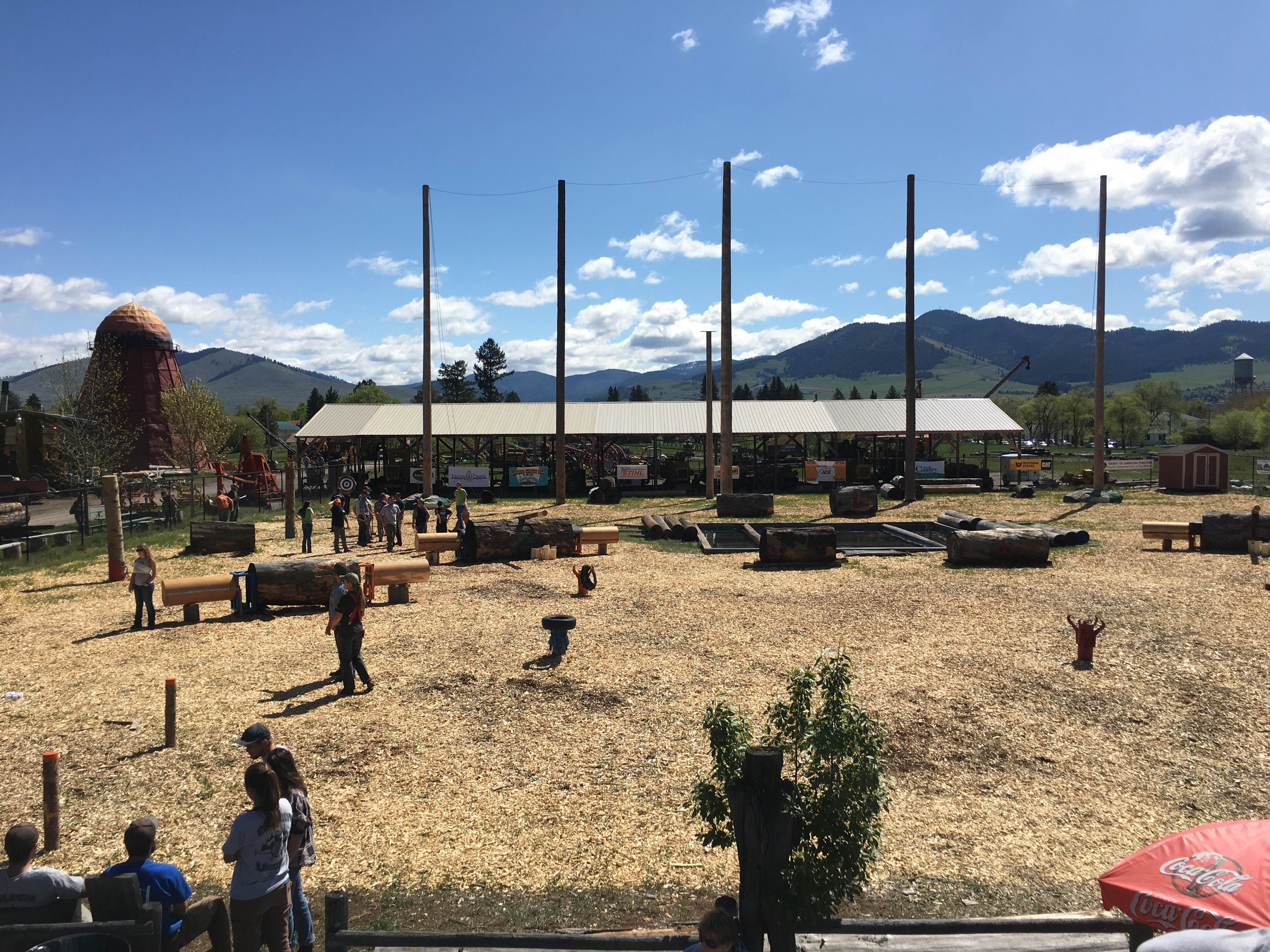
Logger sporting events need to be held at large arenas, like the Grothen Memorial Arena at Fort Missoula, Montana, because it must fit the several obstacle courses for the games.
The lumber industry in the United States dates to precolonial times, and during its height in the 19th century, logging helped drive the economy in New England, the Upper Midwest, and Pacific Northwest. Wood is, of course, an essential building material, but lumberjacks also cut trees to help them regenerate and to maintain healthy forests. But they’ve been known to have a little fun, too: Logging competitions like the AWFC, also known as timber sports and lumberjack sports, go back to the late 1800s.
At the end of workdays at logging camps, lumberjacks would boast about their strength, speed, and logging technique, Lew Freedman writes in Timber: The Story of the Lumberjack World Championships. This eventually led to lumberjacks challenging each other to contests of skill: chopping wooden blocks with an ax, slicing logs with a saw, and balancing precariously on logs floating in a river.
In addition to winning bragging rights, it’s said that the loggers would bet tobacco or small amounts of money. Local fairs and festivals in Oregon, Washington, Wisconsin, Michigan, New York, and Northern New England began staging small logging competitions, primarily for entertainment.

Camenson launches an ax in the ax throwing event.
Soon, the competitions became more rigorous and formalized. In 1939, 40 men from 10 universities west of the Mississippi created the Association of Western Forestry Clubs, and in 1952 the organization held the first woodsman’s events. Professional competitions started to pop up; the Lumberjack World Championships arrived in the 1960s and the STIHL Timbersports Series in 1985.
Competitive loggers today still chop wood at lightning speeds, throw axes, race up 60-foot poles, and roll on logs in water, also known as birling. However, unlike in early contests, there are also non-physical forestry skill events like dendrology, or measuring timber, and timber cruising, where contestants identify types of trees.
Many participants see the contests as an opportunity to honor centuries-old logging and forestry practices. “This is just keeping some of the old traditions alive,” Scott Kuehn, a former hot saw world-record holder and founder of the Forestry Days competition in Montana, told the Missoulian. “It’s about the only time people use crosscuts any more.”

One of Camenson’s teammates from Northern Arizona University participates in the pole climbing event.
Women also regularly compete in logging sports, clocking times that some men can’t reach. Timber sports are still male-dominated, but there were a good number of female competitors at the 2016 AWFC Conclave, Camenson says, and they were all very good. Of the 15 participants on her team that went to Missoula, five were female.
“At first people think that it’s all about being strong, but there’s a ton of technique that goes into most of the events,” Camenson explains. “For sawing, for example, it’s not just how big your muscles are, so you can pull the saw as fast as you can. There are things like having your elbow tucked in, knowing what kind of wood it is, and if you need to put pressure on the saw or not a lot of pressure.”
To achieve fast times, loggers must have both saw skills and knowledge about the wood. The record in the United States for single bucking, the challenging individual competition, is 10.34 seconds. A pair from Camenson’s school took first place in the Jack and Jill event, where a man and a woman team up to saw a log, at the AWFC Conclave. They sawed the log with a 22-inch-diameter in just 28 seconds.
Loggers cut through the wood differently depending on its type (which is selected by the university that is hosting the championship each year). More pressure on the saw is needed if the log is a type of dry wood, whereas lighter, fast pulls are better for soft wood like white fir, Camenson says. The type of saw also matters since some are designed to cut while others scoop the wood out. During the competition, a second person sprays WD-40—an oil and water lubricant—so the saw slides easier and uses a felling wedge that separates the wood so it doesn’t pinch the saw.
The skills that college competitors pick up can often translate to later careers in forestry. Camenson’s first foray into logging was when she landed an internship as a wilderness ranger at the Sierra National Forest in central California, during the summer after high school. Since mechanical devices are not permitted in the forest, she had to use a crosscut saw to cut trees that had fallen on trails.
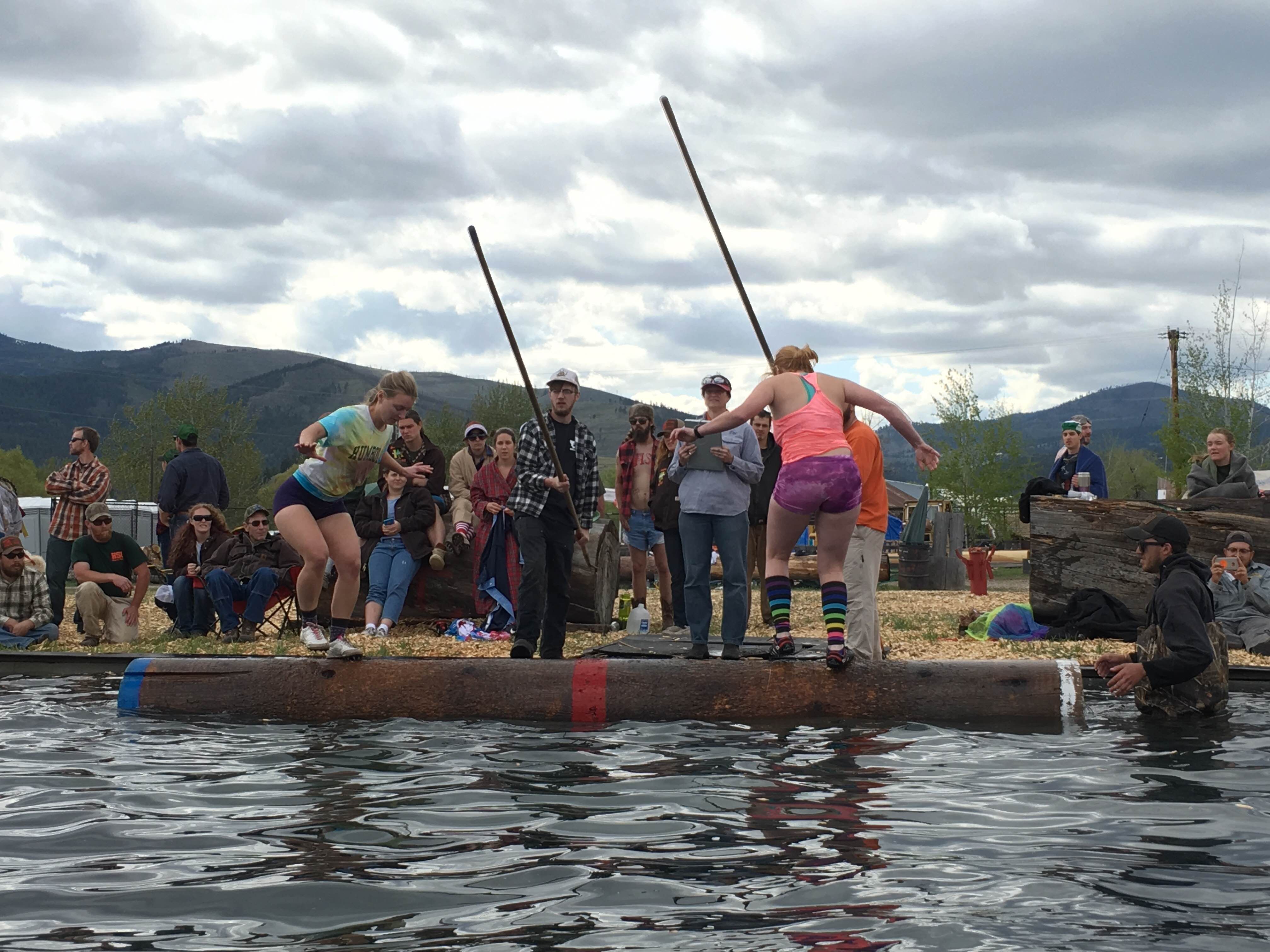
Two competitors balance carefully on the rolling log (Camenson is on the right). Whoever stays on the longest is the victor.
As a freshman in college, Camenson joined Northern Arizona University’s logging team, and has since competed in two collegiate conclaves. In the single buck event at the AWFC competition in Missoula, she blazed through the 20-inch log in about one minute and 23 seconds, earning her the eighth-place position.
By the bottom third of the log, “my body just hit its wall, and there’s nothing you can do. It was like an overwhelming feeling like I was moving in slow-motion,” Camenson says. “But it was up to me at that point to finish the log–and I did.”



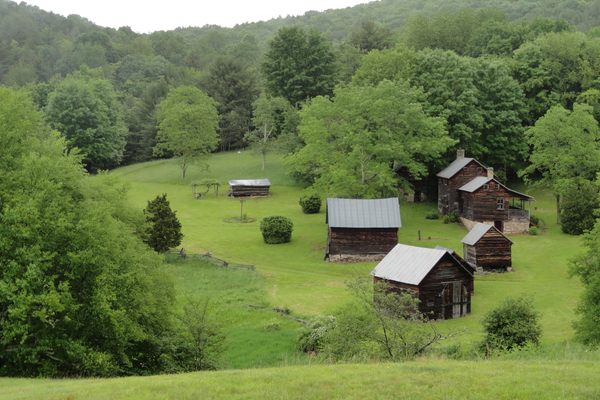

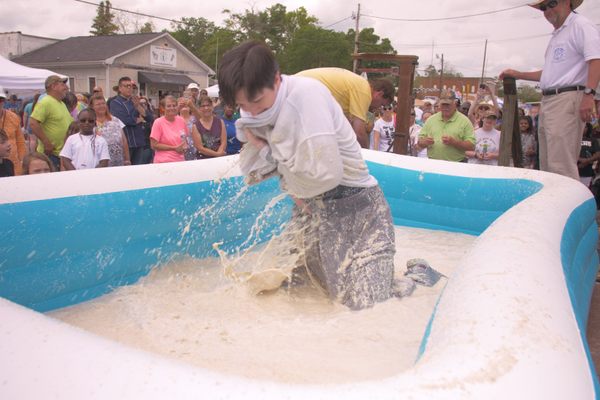










Follow us on Twitter to get the latest on the world's hidden wonders.
Like us on Facebook to get the latest on the world's hidden wonders.
Follow us on Twitter Like us on Facebook